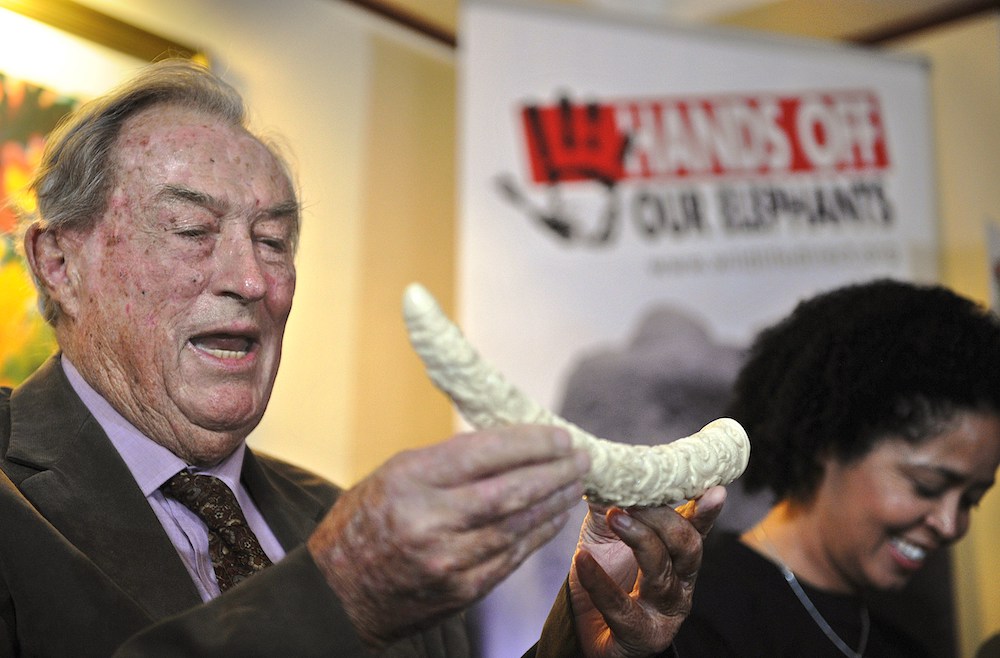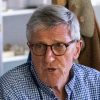My Tribute to Richard Leakey

On January 2, paleoanthropologist Richard Leakey died at his home at Ngong near Nairobi, Kenya. With his passing, paleoanthropology has lost one of its few truly world-famous public figures—a man whose personality ensured that no one was neutral about his views and influence.
Expeditions Richard led, or supported, have provided much of the fossil evidence that is crucial for our understanding of human evolution in eastern Africa. His passion for Africa in general, and Kenya in particular, did much to encourage science and conservation on the continent.
With Richard’s death, I have also lost a close, greatly valued, and steadfast friend. He and I have been fast friends and colleagues since 1968, when he provided me with the opportunity to search for, and then subsequently describe and study, the hominin fossils collected at Koobi Fora on Lake Turkana in Kenya. Thus, he shaped my career and inspired me to abandon surgery for paleoanthropology.
By the time we met, Richard had already had a colorful and promising career. He was the scion of a family with an archaeological tradition that goes back, on his mother’s side, to the antiquarian John Frere. Frere, who in 1797 reported the discovery of flint hand axes together with the fossilized bones of extinct animals at a site in England, is credited with being the founder of “prehistoric archaeology.” Louis Leakey, Richard’s father, was a world-famous paleoanthropologist, while his mother, Mary Leakey, was an equally—if not more—distinguished Paleolithic archaeologist.
Despite—or perhaps because of—his family history, Richard was determined not to follow his parents into human origins research. After leaving school, he trapped animals and ran safaris that paid for flying lessons and his own plane. But Richard had spent his school holidays excavating and cataloguing fossils at Tanzania’s Olduvai Gorge, thereby receiving an intensely practical informal education in geology, paleontology, and archaeology.
In 1963, while flying over Lake Natron in Tanzania, Richard noticed rock outcrops resembling those his parents were working on at Olduvai. The Leakeys encouraged him to explore them. So, along with one of their most able Kamba field workers, Kamoya Kimeu, and archaeologist Glynn Isaac, Richard led a small expedition to Lake Natron. In 1964, Kimeu discovered an early hominin lower jaw with massive chewing teeth that was a good match for “Nutcracker Man”—the 1.8-million-year-old Paranthropus boisei cranium found by Mary at Olduvai in 1959.
Richard, a proud Kenyan, wanted to search for fossil evidence in his own country.
In 1967, Louis became unwell and sent Richard on an expedition he had organized to search for hominin fossils in Ethiopia. Richard and his Kenyan team collected two crania that proved to be the oldest evidence for modern humans in eastern Africa. While flying over Kenya on his way to Ethiopia, Richard noticed promising rock exposures on the eastern shore of what would later be called Lake Turkana. Richard, a proud Kenyan, wanted to search for fossil evidence in his own country. The following year, he led an expedition to the region.
I was a very junior member of that 1968 expedition, which was the first of many that together amassed a rich collection of hominin fossils. None of the three-man team of anatomists was keen to take on the daunting challenge of sorting out the taxonomy of the crania, lower jaws, and teeth. Typically, Richard would not let seniority determine what region of the skeleton we took responsibility for. Frustrated that we could not work out an amicable agreement, Richard resorted to drawing matches. I drew the shortest match, which meant I had the cranial remains. My interpretations differed from Richard’s, but—grudgingly at times—he let me have my way.
Richard and his teams’ discoveries on both the eastern and western shores of Lake Turkana have provided much of the fossil evidence for a crucial period of human evolution. Most famously, Kimeu unearthed the most complete early human skeleton ever found—a 1.6-million-year-old Homo erectus nicknamed “Turkana Boy.”
The fossils they collected also showed that P. boisei (a hominin species that did not lead to Homo sapiens) lived alongside Homo habilis and then Homo erectus. This bolstered the then-controversial idea that different branches of the human evolutionary tree lived in the same region at the same time. Research Richard encouraged also suggested that while P. boisei’s diet was consistent through time, the diets of H. habilis and H. erectus were different, with the latter likely eating substantially more meat. This illustrated how the species’ scavenging skills, opportunistic hunting ability, and physiology evolved over time.
Richard also introduced antiquities laws that helped keep fossils and other artifacts in Africa, directed the National Museums of Kenya, promoted the careers of Kenyan students and scientists, encouraged and broadened the research base within the Turkana region, and worked to end elephant poaching for ivory.
Richard was a natural leader, and only occasionally was his primacy challenged. In the 1970s, he played host to Prince Philip, Duke of Edinburgh, at Lake Turkana, which is on a migration route for birds. The prince and his fellow birdwatchers joined us at Koobi Fora for a much more formal lunch than we usually enjoyed. Richard introduced Prince Philip, indicating that he should sit to Richard’s right, explaining that he, Richard, always sat at the head of the table. In a flash, Prince Philip responded, “Where I sit is the head of the table.” We all smiled inwardly.
As a member of the Leakey family, Richard enjoyed unusual opportunities and privileges. But no one could have used them for the common good as successfully and comprehensively as he did.


































